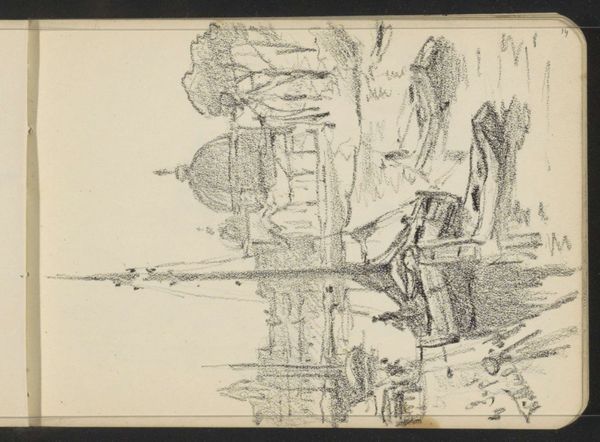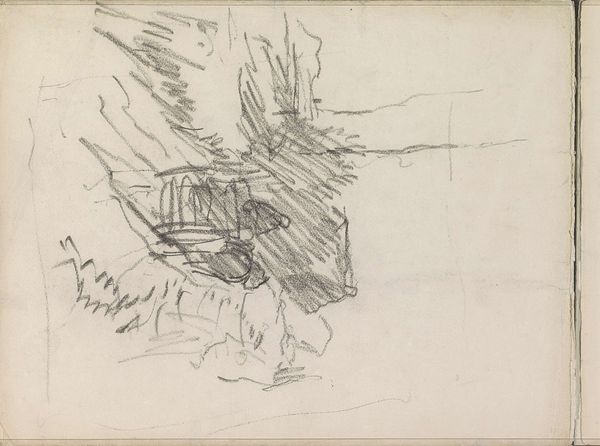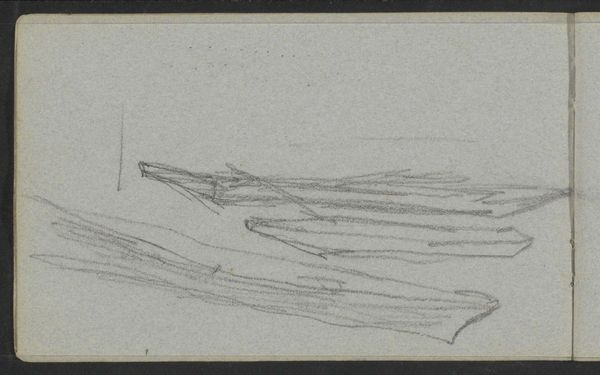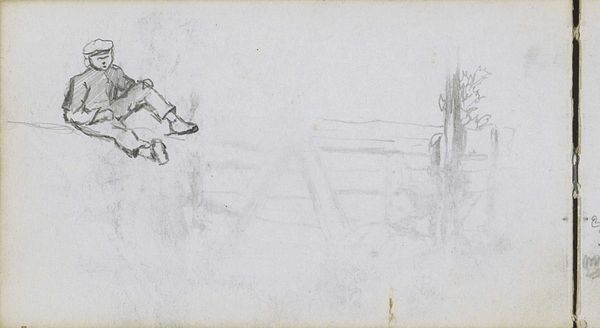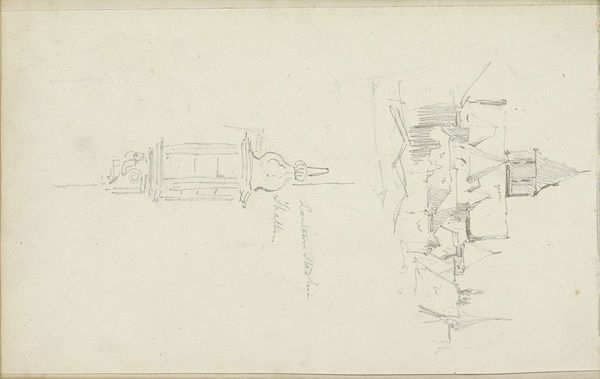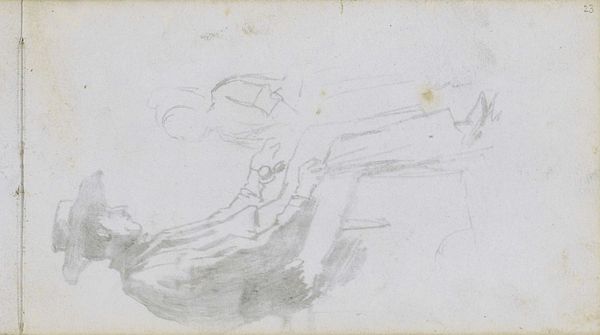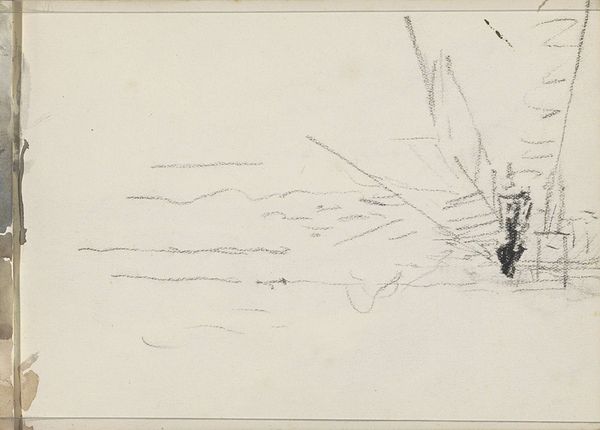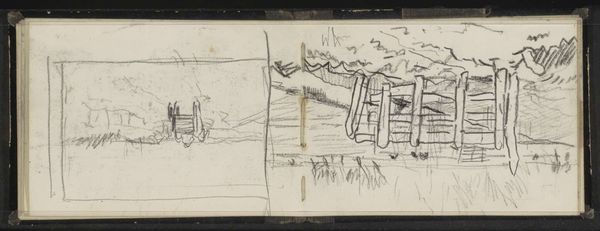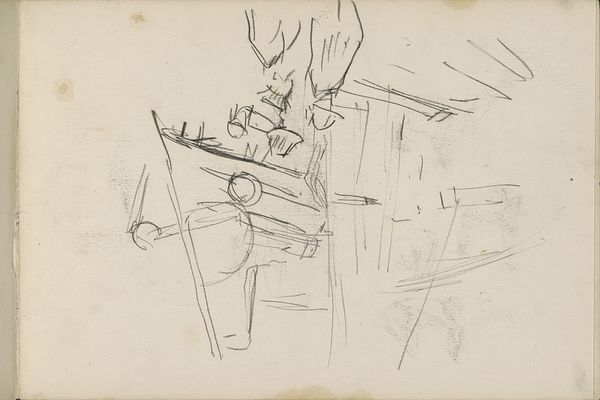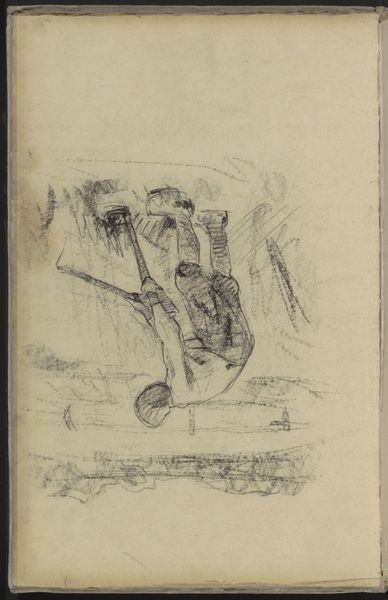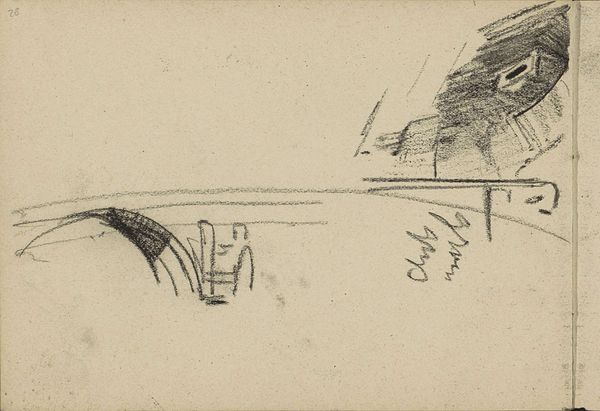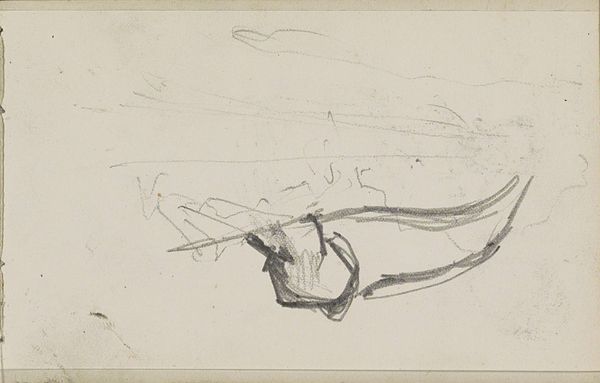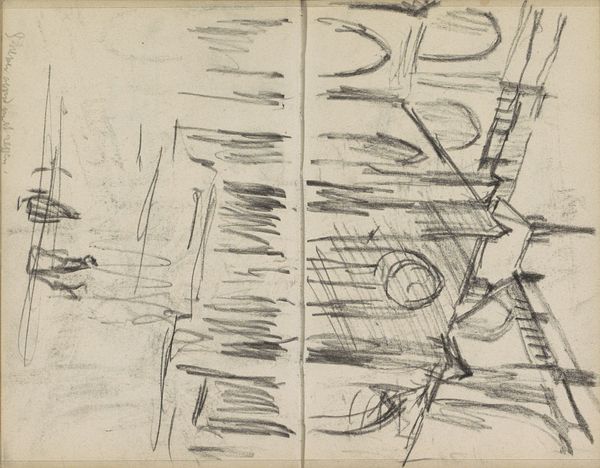
Dimensions: height 113 mm, width 159 mm
Copyright: Rijks Museum: Open Domain
Willem Cornelis Rip made this pencil drawing of a covered wagon, or ‘huifkar,’ in a hilly landscape. The choice of humble materials invites us to consider the work and the world it represents. Rip’s quick marks capture the form of the wagon as it rolls through the Dutch countryside. Notice how the graphite renders the scene with a sense of immediacy. Pencil, a readily available material, democratized art-making, allowing artists to sketch and capture the world around them with ease. But it also speaks to the role of the artist as a recorder of everyday life. Consider the social context of this image. The covered wagon represents transportation and trade, connecting rural communities to larger economies. By focusing on this ordinary scene, Rip elevates the everyday experiences of working people, suggesting that their lives and labors are worthy of artistic attention. So, the next time you encounter a simple drawing like this, remember to look closely at the materials and consider the social context. By doing so, we can gain a deeper appreciation for the art and its connection to the world around us.
Comments
No comments
Be the first to comment and join the conversation on the ultimate creative platform.
